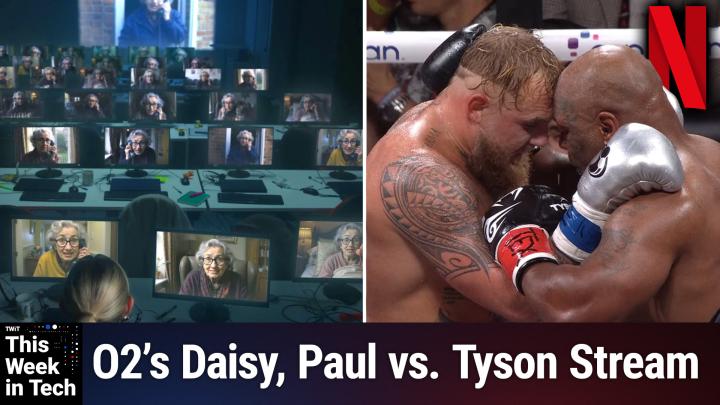How Netflix's Live Sports Gamble Could Change Television Forever
AI-generated, human-edited.
In a significant shift for the streaming giant, Netflix's recent Jake Paul vs. Mike Tyson boxing match has become a watershed moment for live sports streaming, despite technical difficulties that plagued the broadcast. The event, which drew an estimated 65 million viewers, ranks among the most-watched broadcasts outside of the Super Bowl, Olympics, and major cricket matches.
Netflix's Rocky Start in Live Boxing (no pun intended)
During the latest episode of This Week in Tech (TWiT), host Leo Laporte and guests discussed how Netflix has been methodically building up to this moment. The company started with smaller live events like Chris Rock's comedy special and the Tom Brady roast, using these as stepping stones to test their live-streaming capabilities. However, the Paul-Tyson fight proved to be their biggest challenge yet, with hashtags like #NetflixCrash and #Unwatchable trending during the event.
Alex Kantrowitz, host of the Big Technology podcast, who stayed up past midnight to watch the spectacle, noted that while the main event might have been more spectacle than sport, the undercard fights - particularly the women's bout - delivered exceptional athletic performances. "I've never seen any boxing like that, male or female," Kantrowitz remarked.
The Streaming Sports Revolution
The discussion revealed how streaming platforms are rapidly reshaping sports broadcasting:
- Netflix has secured rights to air NFL games on Christmas Day and WWE's Monday Night Raw
- Amazon's Thursday Night Football has surpassed Monday Night Football in viewership
- YouTube is heavily investing in sports content
- Netflix's "Drive to Survive" series has dramatically increased Formula One's popularity in the US
As The Register's Iain Thomson pointed out, Formula One viewership in San Francisco has grown from "a couple dozen geeky people" in 2008 to packed sports bars today, demonstrating Netflix's ability to build new audiences for sports.
Technical Challenges and Future Implications
The panel discussed several key technical challenges facing sports streaming: Viewer synchronization issues across different platforms, betting implications due to transmission delays, and the need for a robust infrastructure to handle massive concurrent viewership. Despite these challenges, the consensus was clear: over-the-top broadcasting is here to stay. As Laporte noted, "If people are completely willing to watch a streaming version of an NFL football game or 65 million watching that fight... if I were a cable company, I'd be worried right now."
What's Next for Netflix
Netflix's upcoming schedule includes two NFL games on Christmas Day and weekly WWE Monday Night Raw broadcasts. Plus, there’s potential expansion into other live sports properties. While the Tyson-Paul fight exposed some growing pains and technical limitations, it also demonstrated Netflix's ability to create "must-see TV" events. As Kantrowitz observed, "They're effectively doing de facto rate increases by password sharing and all this stuff, not allowing you to churn. So they’re maxing out and the only way to create new audiences is to have must-see TV live events."
Want to hear more insights about the future of social media, cybersecurity, AI, and other tech developments? Listen to the full episode of This Week in Tech at twit.tv.
